Agra shimmered in furnace heat as we left for our journey across the Ganges Plain to Jaipur, Rajasthan via the historic ancient city and palace of Fatephur Sikri.
Shady city streets were lined with attractive tropical trees including Labernum, Oleander and Tamarind. Interestingly, colourful Bougainvilleas were grown as standard street plants, rather than in the creeping habit we are more familiar with in Australia.
The outskirts of Agra comprised lively villages and colourful markets. Traffic was as usual chaotic with numerous farmers bringing in their produce - often on simple wooden trays attached to bicycles. Dust covered, noisy children ran riot, leaping onto any passing tray or vehicle they could find. No-one seemed to mind. It all appeared to be quite normal. As outsiders, we were slowly coming to terms with locals being a delightful but noisy people.
The famous Indo-Gangetic Plain encompasses most of northern and eastern India and is home to nearly one billion people - or around 1/7th of the world's population. The highly fertile deep alluvial soils are fed by the sacred Ganges River and its major tributaries, as well as the Yamuna River; both originating in the high peaks of the Himalayas.
In Uttar Pradesh, the gigantic plain stretches east to west across the entire width of the state and houses the highest density population in India - but ironically and tragically the lowest per capita income.
The rural plains toward Fatephur Sikri were intensively farmed with emerging crops of millet, sorghum, buckwheat, okra and paddy rice. The Monsoon was very late and farmers were waiting, waiting for the rains to come. Small grim villages were filled with languishing thin staring rural workers, desperate for the onset of the coming wet season. Many of the villages were depressingly poor, with seasonal workers camping in dust caked black plastic tents and sadly surrounded by ubiquitous piles of rubbish, mostly plastic containers. The poverty was sobering, especially for such a fertile region.
Fatephur Sikri Palace Complex and City is located about 40 km west of Agra near the border of Rajasthan. Meaning "City of Victory" the fortified city and palace was founded in 1569 by the Mughal emperor Akbar, and served as the short-lived capital of the Mughal Empire between 1571 and 1585.
According to romantic legend, the city was founded as a result of Akbar's visit to the village of Sikri where he consulted with the Sufi Saint Shaikh Salim Christi who predicted (correctly) to the childless emperor, the birth of an heir to the Mughal throne. When the prophesy came true, Akbar built his new capital on the site of Sikri Ridge. The heir was no other than the famous Jahangir. Sadly, the city later suffered from acute water shortages and was abandoned shortly after its completion in 1585. The capital of the empire was then moved to Lahore (now in Pakistan).
"Oh shit, this is just tooooo hot!" exclaimed a heavily sweating young man as he climbed into bus taking us to the grounds of the palace complex. For some reason, this seemed like an unlikely yet quite comical outburst from a local Indian guide. Outside the temperature was soaring around 45 degrees. Goodness knows what the temperature was inside the bus. All we knew was that we thought we would die of heat stroke any minute. But the bus waited, and waited until we had sufficient passengers to warrant a ride to the complex.
We began to agree with the local guide as the bus finally lurched toward the towering pink-red walls of Fatephur Sikri, blurred by the blasting sunlight and the shimmering heat rising from the surrounding dusty flat plains.
If it was at all possible, the locals looked even worse than we did. Ravi, with his head wrapped in his make-shift turban and looking like he was spray painted by his sweat soaked white shirt, took off as usual at the rate of knots toward the palace complex, leaving us to stumble as fast as could to keep up with him. It seemed like us, he wanted to get this blistering ordeal over and one with. "Do we have to?" I moaned. There was no point in questioning our visit. There was simply no option.
Indian fortified cities, palaces, temples, mosques, tombs and other historical sites are strikingly robust in their architecture, and those we visited were splendidly preserved. And Fatephur Sikri was no exception. Built on a rocky ridge, the Fatephur Sikri complex measures three kilometers in length by one kilometer in width, and is surrounded by a six km wall on three of its sides; the fourth being a lake at the height of its glory.
Constructed of local red sandstone, the buildings of the complex are solidly built, yet so well proportioned in design they display an indelible elegance, highlighted by gorgeous slender, intricately engraved pillars, dramatically tiered pavilions, Muslim inspired cupolas, spacious stone lined courtyards and symmetrically designed pools and gardens. In the blazing heat we had the complex almost to ourselves; the solitude and imposing dusky pink-red city and palace buildings feeling eerily like the facade of a past used movie set.
Now listed as a World Heritage Site, Fatephur Sikri is widely regarded as an Indo-Islamic masterpiece. Interestingly, influences from Jain and Hindu architecture are seen side by side with Islamic elements. Similarly, Akbar's architecture incorporates Persian influences, especially the pond of Anup Talao and surrounding gardens. Akbar, a Muslim and descendant of the great Tamerlane (Timur the Great) was a man of unusual religious tolerance for his time; his three favourite wives being of Hindu, Moslem and Christian beliefs, each being assigned her own palace within the complex.
Although we spent some two hours at the complex, we had time only to visit a small number of the Fatephur Sikri historic buildings. In the midday sweltering heat, there would have been no way we could have visited more sites. Just walking from building to building was exhausting.
But despite our apprehension of visiting the complex in such sweltering conditions, we thoroughly enjoyed the experience of exploring the fascinating palace complex. The following historic sites are well worth describing and well worth the visit. Well, in a cooler season that is....
The Anup Talao (Peerless Pool)
This lovely ornamental pool is located in the central area of some of the main attractions of the Fatephur Sikri, namely Akbar's residence and "Pleasure Palace" The Panch Mahal, The Hall of Private Audience the Diwan-i-Khas, The Treasury or Ankh Michauli and The Astrologer's Seat.
The symmetrically designed square pool was constructed to serve as an air coolant for the Imperial Residences. An island platform was used for singers and musicians to perform for Akbar as he watched from his pavilion in his private quarters known as the Daulat Khana (Abode of Fortune). It could also be viewed by the royal women of the court from the Panch Mahal.
You could almost feel the movement, singing and exciting atmosphere this place once exuded. In the height of its glory, the performances at Anup Talao would have provided great entertainment and a lively and exciting theatre for the palace family.
The Hujura-i-Anup Talao (Turkish Sultana's House)
This elegant palace was built for Akbar's Turkish Muslim wife and consists of a small chamber surrounded by a verandah supported on exquisitely carved columns. The interior also houses richly engraved red sandstone with ornamental geometric and floral designs. In fact the designs are so intricate they give an appearance of being made from exquisitely carved wood.
The Panch Mahal
This beautifully proportioned elegant building comprises four storeys of decreasing size seated on a platform and supported by 84 columns. The building is also known as "Badgir" or (Place to Catch Wind) or a cooling tower.
Located near the Anup Talao pool and close to the imperial harems, it is believed that Akbar used the Panch Mahal as a "pleasure palace". Lattice screens or "jaali" once gave privacy to the queens and princesses on the top terrace as they enjoyed cool breezes from the Anup Talao pool. From the Panch Mahal the royal court would have had wonderful views of the fort, the pool and the musicians.
The Diwan-i-Khas (The Jewel House)
Otherwise known as the Hall of Private Audience, this plain square but commanding structure is situated on the northern end of the wide Pashisi Courtyard. The external architecture is beautifully enhanced by four gorgeous "chhatris" (elevated domed pavilions representing the values of pride and honour. They are a common feature of Rajput architecture in the state of Rajasthan) on the roof. The building houses a wonderful carved stone central column which flares upward to create a flat-topped circular balcony or "throne" that is linked to the four corners of the room. It is thought that this plinth was used by Akbar to debate religious matters with scholars and ministers.
The Diwan-i-Aam (Hall of Public Audience)
This pavilion-like, multi-bayed rectangular building opens out onto a broad courtyard. It was the site where Akbar is thought to have dealt out justice with public executions using elephants to trample convicted criminals to death.
The Ankh Michauli (Treasury Building)
Situated next to the Diwan-i-Khas, the Treasury Building boasts intricately carved robust stone pillars and arches to its entry. The building houses fascinating secret stone safes, one which was left open for visitor viewing. Sea monsters carved on the ceiling struts were designed to protect the fabulous wealth which was once stored there.
Strangely, the building had a most haunting atmosphere. We could feel and hear the bustling movement, footsteps and low voices of the busy bankers and people of the palace. We were surprised and delighted we found The Treasury so intriguing.
The Shabistan-i-Iqbal (Jodh Bai's Palace)
This large impressive building is well regarded as one of the complex's finest examples of Mughal architecture. It is also the largest of the "Zenana" or imperial palaces for women. It houses a large open quadrangle on the sides of which are suites of single storeyed rooms with double storied blocks in the centre.
Outside the palace is Jodh Bai's kitchen. Looking more like a security house, the tale tell evidence of carbon deposits on the interior stone walls suggests that this small squat building was once a kitchen for the palace. It later served as an administration office.
Interestingly, Lonely Planet Guide as well as a number of other references to this palace describe it as once home to Akbar's Hindu wife Jodh Bai, said to be his favourite.
An engraved stone at the entry of the palace however states "This imposing palace comprising the Principal Haramsara has been wrongly ascribed to Jodh Bai who has nothing to do with Sikri". Jodh Bai was in fact the wife of Akbar's son Jahangir.
Fatehpur Sikri - "Oh Shit, This is Tooooo Hot!"
Tuesday, July 17, 2012
 Fatehpur Sikri, Uttar Pradesh, India
Fatehpur Sikri, Uttar Pradesh, India
Other Entries
-
16"A Love Marriage Sir.....?"
Jul 0215 days prior Amritsar, Indiaphoto_camera14videocam 0comment 0
Amritsar, Indiaphoto_camera14videocam 0comment 0 -
17Kashmir: Tranquility and Terror
Jul 0314 days prior Srinagar, Indiaphoto_camera11videocam 0comment 0
Srinagar, Indiaphoto_camera11videocam 0comment 0 -
18Photo Gallery of Srinagar
Jul 0314 days prior Srinagar, Indiaphoto_camera30videocam 0comment 0
Srinagar, Indiaphoto_camera30videocam 0comment 0 -
19A Police Assault, a Yatra & Zozilla Pass
Jul 0512 days prior Kargil, Indiaphoto_camera22videocam 0comment 0
Kargil, Indiaphoto_camera22videocam 0comment 0 -
20Into Ladakh: "Take Care, Life Has No Spare"
Jul 0611 days prior Alchi, Indiaphoto_camera24videocam 0comment 0
Alchi, Indiaphoto_camera24videocam 0comment 0 -
21Jule (joo-lay) from Ley!
Jul 0710 days prior Leh, Indiaphoto_camera13videocam 0comment 0
Leh, Indiaphoto_camera13videocam 0comment 0 -
22Photo Gallery of Leh
Jul 0710 days prior Leh, Indiaphoto_camera26videocam 0comment 0
Leh, Indiaphoto_camera26videocam 0comment 0 -
23"Luxury Camping" Or a Rough Night in Sarchu
Jul 107 days prior Sarchu Heights, Indiaphoto_camera32videocam 0comment 0
Sarchu Heights, Indiaphoto_camera32videocam 0comment 0 -
24To Manali: "But Sir, We Have a Flight to Catch..."
Jul 116 days prior Manali, Indiaphoto_camera18videocam 0comment 0
Manali, Indiaphoto_camera18videocam 0comment 0 -
25Magical Manali
Jul 116 days prior Manali, Indiaphoto_camera11videocam 0comment 0
Manali, Indiaphoto_camera11videocam 0comment 0 -
26Mandi Town: Frenetic but Friendly
Jul 134 days prior Mandi, Indiaphoto_camera18videocam 0comment 0
Mandi, Indiaphoto_camera18videocam 0comment 0 -
27Shimla: Birthplace of the Indian Partition
Jul 143 days prior Shimla , Indiaphoto_camera8videocam 0comment 0
Shimla , Indiaphoto_camera8videocam 0comment 0 -
28PRIMATE ALERT! Photo Gallery of Shimla
Jul 143 days prior Shimla, Indiaphoto_camera28videocam 0comment 0
Shimla, Indiaphoto_camera28videocam 0comment 0 -
29Toy Train to Kalka & the Shatabdi Express to Delhi
Jul 143 days prior Delhi, Indiaphoto_camera12videocam 0comment 0
Delhi, Indiaphoto_camera12videocam 0comment 0 -
30Introduction to the Mighty Mughal Empire
Jul 161 day prior Agra, Indiaphoto_camera11videocam 0comment 0
Agra, Indiaphoto_camera11videocam 0comment 0 -
31Majestic Mughul Legacies - Akbar's Tomb & Red Fort
Jul 17earlier that day Agra, Indiaphoto_camera34videocam 0comment 0
Agra, Indiaphoto_camera34videocam 0comment 0 -
32Majestic Mughal Legacies - The Taj Mahal
Jul 17earlier that day Agra, Indiaphoto_camera23videocam 0comment 0
Agra, Indiaphoto_camera23videocam 0comment 0 -
33Fatehpur Sikri - "Oh Shit, This is Tooooo Hot!"
Jul 17 Fatehpur Sikri, Indiaphoto_camera20videocam 0comment 0
Fatehpur Sikri, Indiaphoto_camera20videocam 0comment 0 -
34Introducing Rajasthan: Land of the Kings
Jul 17later that day Jaipur, Indiaphoto_camera7videocam 0comment 0
Jaipur, Indiaphoto_camera7videocam 0comment 0 -
35The Best Exotic Samode Haveli
Jul 181 day later Jaipur, Indiaphoto_camera17videocam 0comment 0
Jaipur, Indiaphoto_camera17videocam 0comment 0 -
36Hot Forts, Hot Palaces: Amber Fort
Jul 181 day later Jaipur, Indiaphoto_camera27videocam 0comment 0
Jaipur, Indiaphoto_camera27videocam 0comment 0 -
37Hot Palaces: Jal & Hawa Mahals & Pink City Palace
Jul 181 day later Jaipur, Indiaphoto_camera17videocam 0comment 0
Jaipur, Indiaphoto_camera17videocam 0comment 0 -
38Floating to the Call of the Azan
Jul 181 day later Jaipur, Indiaphoto_camera11videocam 0comment 0
Jaipur, Indiaphoto_camera11videocam 0comment 0 -
39Corruption is Rife but That is Life in India
Jul 203 days later Delhi, Indiaphoto_camera18videocam 0comment 0
Delhi, Indiaphoto_camera18videocam 0comment 0 -
40Three Missions in Shanghai
Jul 214 days later Shanghai, Chinaphoto_camera16videocam 0comment 0
Shanghai, Chinaphoto_camera16videocam 0comment 0 -
41Reflections: Restless Lands of Pakistan and India
Jul 225 days later Crowdy Head , Australiaphoto_camera54videocam 0comment 0
Crowdy Head , Australiaphoto_camera54videocam 0comment 0 -
42POSTCRIPT - A Not So Enjoyable Journey....
Nov 21492 days later Crowdy Head , Australiaphoto_camera3videocam 0comment 2
Crowdy Head , Australiaphoto_camera3videocam 0comment 2

 Fatehpur Sikri, Uttar Pradesh, India
Fatehpur Sikri, Uttar Pradesh, India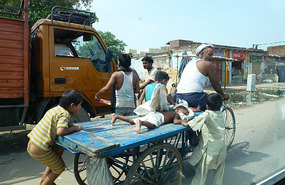
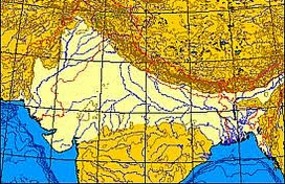
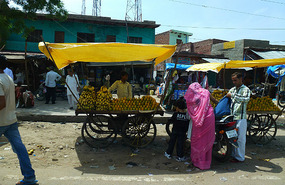

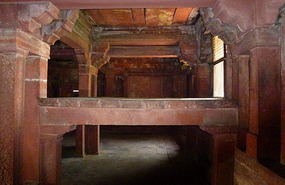


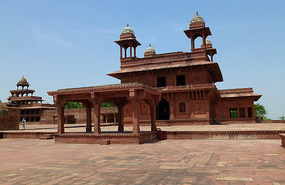
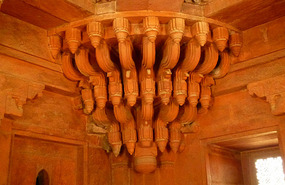
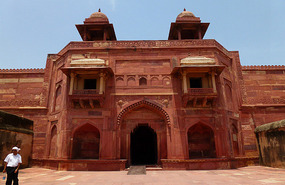
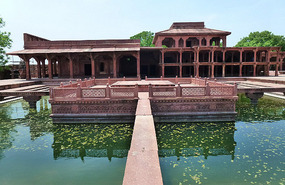

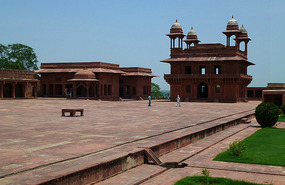
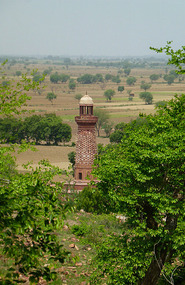
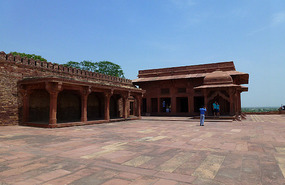
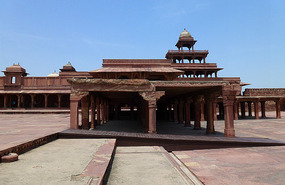
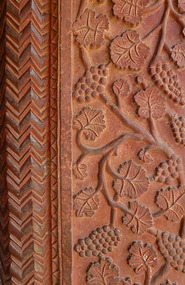
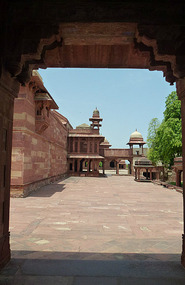
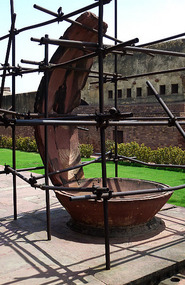




2025-05-22